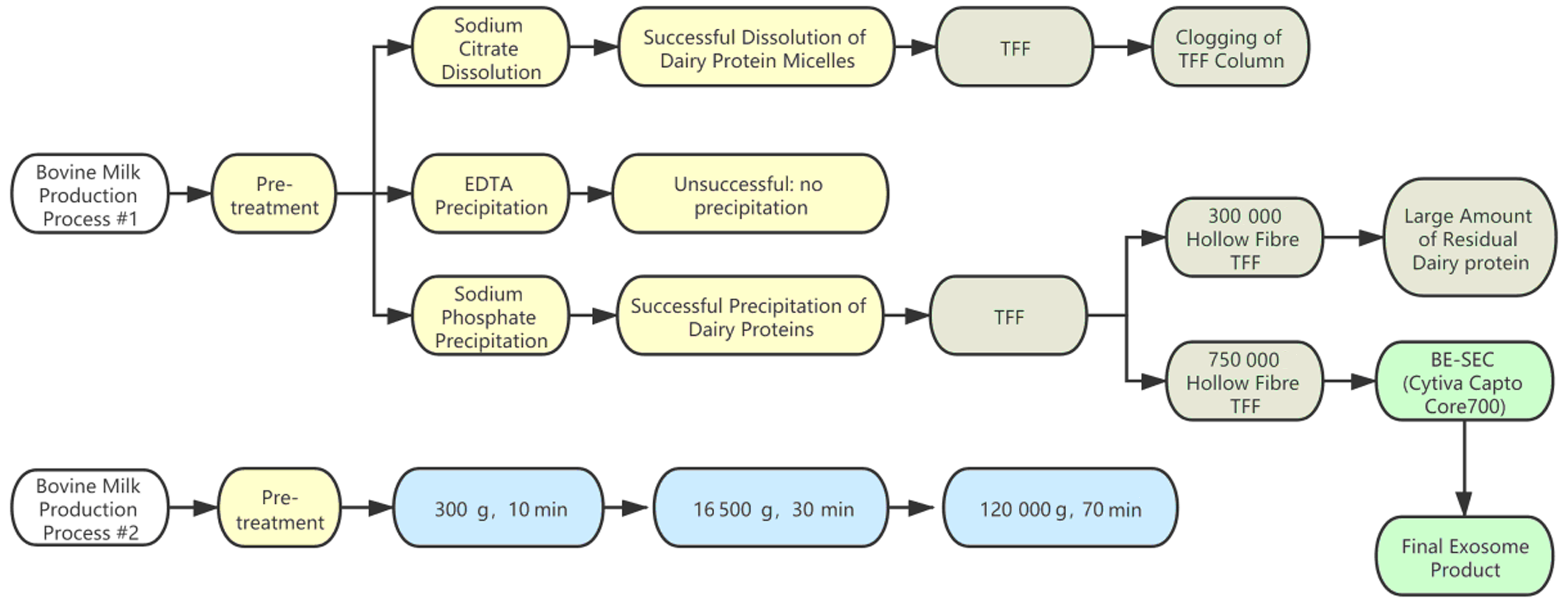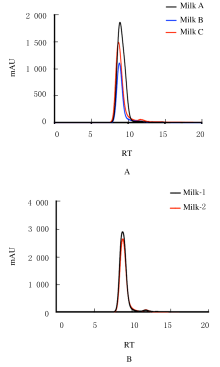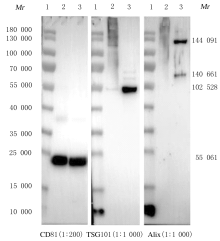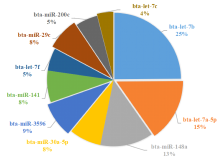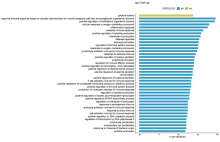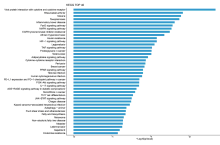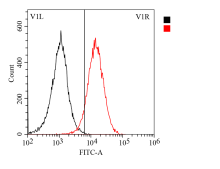| 1 | NANA-SINKAM S P, ACUNZO M, CROCE C M, et al. Extracellular vesicle biology in the pathogenesis of lung disease[J]. Am J Respir Crit Care Med, 2017, 196(12): 1510-1518. |
| 2 | PETERSON M F, OTOC N, SETHI J K, et al. Integrated systems for exosome investigation[J]. Methods, 2015, 87: 31-45. |
| 3 | TROMBETTA D, SPARANEO A, FABRIZIO F P, et al. Liquid biopsy and NSCLC[J]. Lung Cancer Manag, 2016, 5(2): 91-104. |
| 4 | LI X, WANG S, ZHU R, et al. Lung tumor exosomes induce a pro-inflammatory phenotype in mesenchymal stem cells via NFκB-TLR signaling pathway[J]. J Hematol Oncol, 2016, 9: 42. |
| 5 | CAROBOLANTE G, MANTAJ J,FERRARI E,et al. Cow milk and intestinal epithelial cell-derived extracellular vesicles as systems for enhancing oral drug delivery[J]. Pharmaceutics, 2020, 12(3): E226. |
| 6 | LIN D L, CHEN T, XIE M Y, et al. Oral administration of bovine and porcine milk exosome alter miRNAs profiles in piglet serum[J]. Sci Rep, 2020, 10(1): 6983. |
| 7 | ZENG B, CHEN T, XIE M Y, et al. Exploration of long noncoding RNA in bovine milk exosomes and their stability during digestion in vitro[J]. J Dairy Sci, 2019, 102(8): 6726-6737. |
| 8 | ARNTZ O J, PIETERS B C, OLIVEIRA M C, et al. Oral administration of bovine milk derived extracellular vesicles attenuates arthritis in two mouse models[J]. Mol Nutr Food Res, 2015, 59(9): 1701-1712. |
| 9 | FILIPE V, HAWE A, JISKOOT W. Critical evaluation of Nanoparticle Tracking Analysis (NTA) by NanoSight for the measurement of nanoparticles and protein aggregates[J]. Pharm Res, 2010, 27(5): 796-810. |
| 10 | MELNIK B C, SCHMITZ G. Exosomes of pasteurized milk: potential pathogens of Western diseases[J]. J Transl Med, 2019, 17(1): 3. |
| 11 | SEDYKH S E, BURKOVA E E, PURVINSH L V, et al. Milk exosomes: isolation, biochemistry, morphology, and perspectives of use[M].Extracellular Vesicles and Their Importance in Human Health. London:IntechOpen, 2020. |
| 12 | SOMIYA M, YOSHIOKA Y, OCHIYA T. Biocompatibility of highly purified bovine milk-derived extracellular vesicles[J]. J Extracell Vesicles, 2018, 7(1): 1440132. |
| 13 | AGRAWAL A K, AQIL F, JEYABALAN J, et al. Milk-derived exosomes for oral delivery of paclitaxel[J]. Nanomedicine, 2017, 13(5): 1627-1636. |
| 14 | BETKER J L, ANGLE B M, GRANER M W, et al. The potential of exosomes from cow milk for oral delivery[J]. J Pharm Sci, 2019, 108(4): 1496-1505. |
| 15 | CORSO G, M?GER I, LEE Y, et al. Reproducible and scalable purification of extracellular vesicles using combined bind-elute and size exclusion chromatography[J]. Sci Rep, 2017, 7(1): 11561. |
| 16 | MCNAMARA R P, CARO-VEGAS C P, COSTANTINI L M, et al. Large-scale, cross-flow based isolation of highly pure and endocytosis-competent extracellular vesicles[J]. J Extracell Vesicles, 2018, 7(1): 1541396. |
| 17 | RAHMAN M M, SHIMIZU K,YAMAUCHI M,et al. Acidification effects on isolation of extracellular vesicles from bovine milk[J]. PLoS One, 2019,14(9): e0222613. |
| 18 | BENMOUSSA A, MICHEL S, GILBERT C, et al. Isolating multiple extracellular vesicles subsets, including exosomes and membrane vesicles, from bovine milk using sodium citrate and differential ultracentrifugation[J]. Bio Protoc, 2020, 10(11): e3636. |
| 19 | VASWANI K, MITCHELL M D, HOLLAND O J, et al. A method for the isolation of exosomes from human and bovine milk[J]. J Nutr Metab, 2019, 2019: 5764740. |
| 20 | OEYEN E, VAN MOL K, BAGGERMAN G, et al. Ultrafiltration and size exclusion chromatography combined with asymmetrical-flow field-flow fractionation for the isolation and characterisation of extracellular vesicles from urine[J].J Extracell Vesicles,2018,7(1): 1490143. |
| 21 | SZATANEK R, BARAN J, SIEDLAR M, et al. Isolation of extracellular vesicles: Determining the correct approach (Review)[J]. Int J Mol Med, 2015, 36(1): 11-17. |
| 22 | ZHANG X G, BORG E G F, LIACI A M, et al. A novel three step protocol to isolate extracellular vesicles from plasma or cell culture medium with both high yield and purity[J]. J Extracell Vesicles, 2020, 9(1): 1791450. |
| 23 | ZHAO Z H, YU S R, XU M J, et al. Effects of microwave on extracellular vesicles and microRNA in milk[J]. J Dairy Sci, 2018, 101(4): 2932-2940. |
| 24 | LIU T, HU W Y, ZOU X, et al. Human periodontal ligament stem cell-derived exosomes promote bone regeneration by altering MicroRNA profiles[J]. Stem Cells Int, 2020, 2020: 8852307. |
| 25 | YEN C H, LIN Y S, TU C F. A novel method for separation of caseins from milk by phosphates precipitation[J].Prep Biochem Biotechnol,2015,45(1):18-32. |
| 26 | MANCA S, UPADHYAYA B, MUTAI E, et al. Milk exosomes are bioavailable and distinct microRNA cargos have unique tissue distribution patterns[J]. Sci Rep, 2018, 8(1): 11321. |
| 27 | BENMOUSSA A,LAUGIER J,BEAUPARLANT C J, et al. Complexity of the microRNA transcriptome of cow milk and milk-derived extracellular vesicles isolated via differential ultracentrifugation[J]. J Dairy Sci, 2020, 103(1): 16-29. |
| 28 | LI G F, TANG X Y, CHEN H L, et al. miR-148a inhibits pro-inflammatory cytokines released by intervertebral disc cells by regulating the p38/MAPK pathway[J]. Exp Ther Med, 2018, 16(3): 2665-2669. |
| 29 | JIANG X, XU C K, LEI F, et al. MiR-30a targets IL-1α and regulates islet functions as an inflammation buffer and response factor[J]. Sci Rep, 2017, 7(1): 5270. |
 )
)

